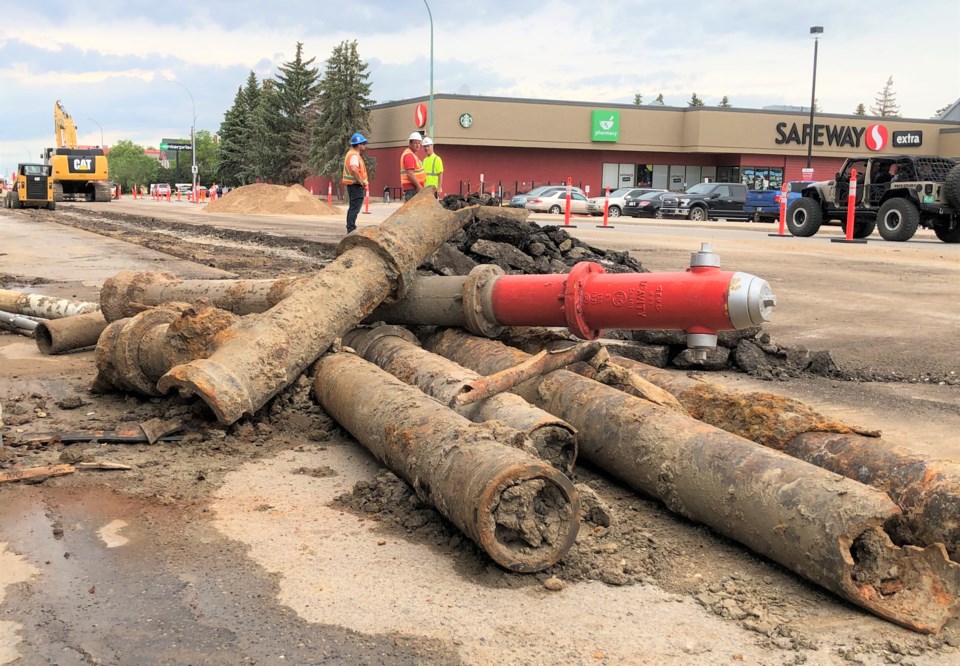The number of water main breaks last year remained about the same as in 2020, a likely sign that city hall’s cast iron water main replacement program is working.
There were 54 water main breaks in 2021 versus 53 breaks the year before. Meanwhile, there were 109 breaks in 2019, 97 in 2018, 116 in 2017, 85 in 2016 and 60 in 2015.
“… 2021 and 2020 have been good years for the city, especially in respect to the last four or five,” said Darrin Stephanson, director of public works and utilities. “So, that’s obviously favourable for us and just tells us that the cast iron water main replacement program is working well.”
The program — which replaces decades-old cast iron pipes with PVC material — is “pretty direct evidence” that city hall has removed some of the worst pipes in the city, based on reductions of almost 50 per cent during the past five years, he continued.
Not only is there less cost to the utility and ratepayers paying into that utility, but there is also less disruption to homeowners in their water services, he added.
Cast iron pipes have been used in Moose Jaw for decades but corrode over time, Stephanson explained. In comparison, PVC pipes are more stable long-term, are modern materials, have a longer lifespan, do not degrade as fast, and are more resilient to problems such as bacteria.
“While there’s been extensive studies done on PVC pipes and the kind of expected lifespan of 50 to 100 years, obviously the material hasn’t been in use that long, so it’s entirely possible that the city — and all users of those types of pipe systems — could get longer than that,” he said.
“And certainly, we’re seeing the benefits of getting that material in the ground. And by and large, we don’t experience any problems with PVC installed around the city.”
City hall will start phase 7 of the cast iron replacement program this year. So far, it has replaced 20 kilometres of about 84 kilometres of underground pipe.
An analysis in December 2020 suggested it could take 34 years for city hall to replace all cast iron pipes based on how many metres are left to replace — about 84,000 metres — and how many metres are replaced each year, an average of 2,498 metres.
“What’s important to note — and what we’re seeing in the number of breaks — is that we’ve addressed some of the sections that were deteriorated the most, so that’s creating a lot more stability in our distribution system than we’ve had in previous years,” said Stephanson. “So, that’s going to lower operating costs and responding to those outages and emergencies that people get.
“So, there’s (still) a fair ways to go.”




